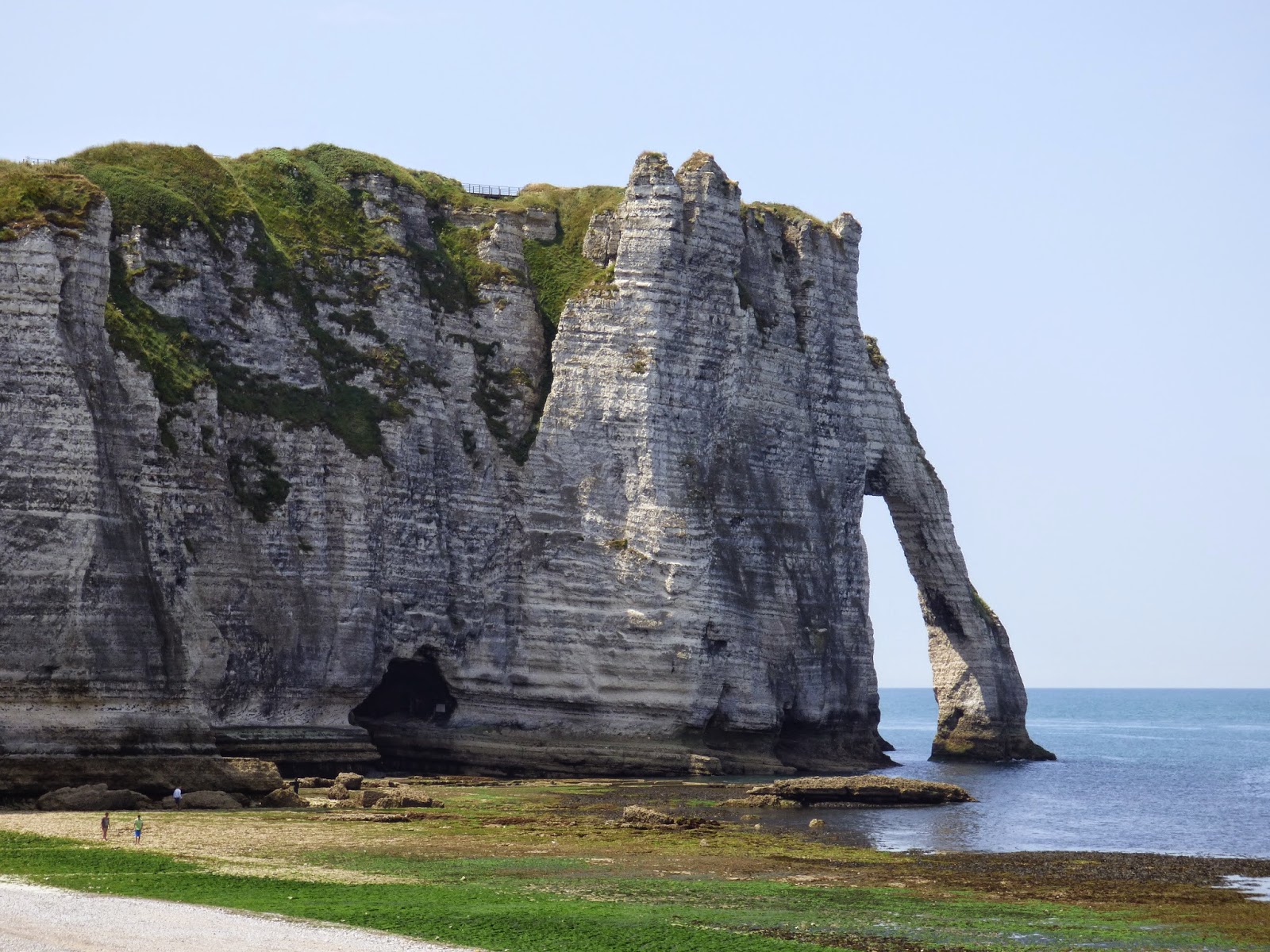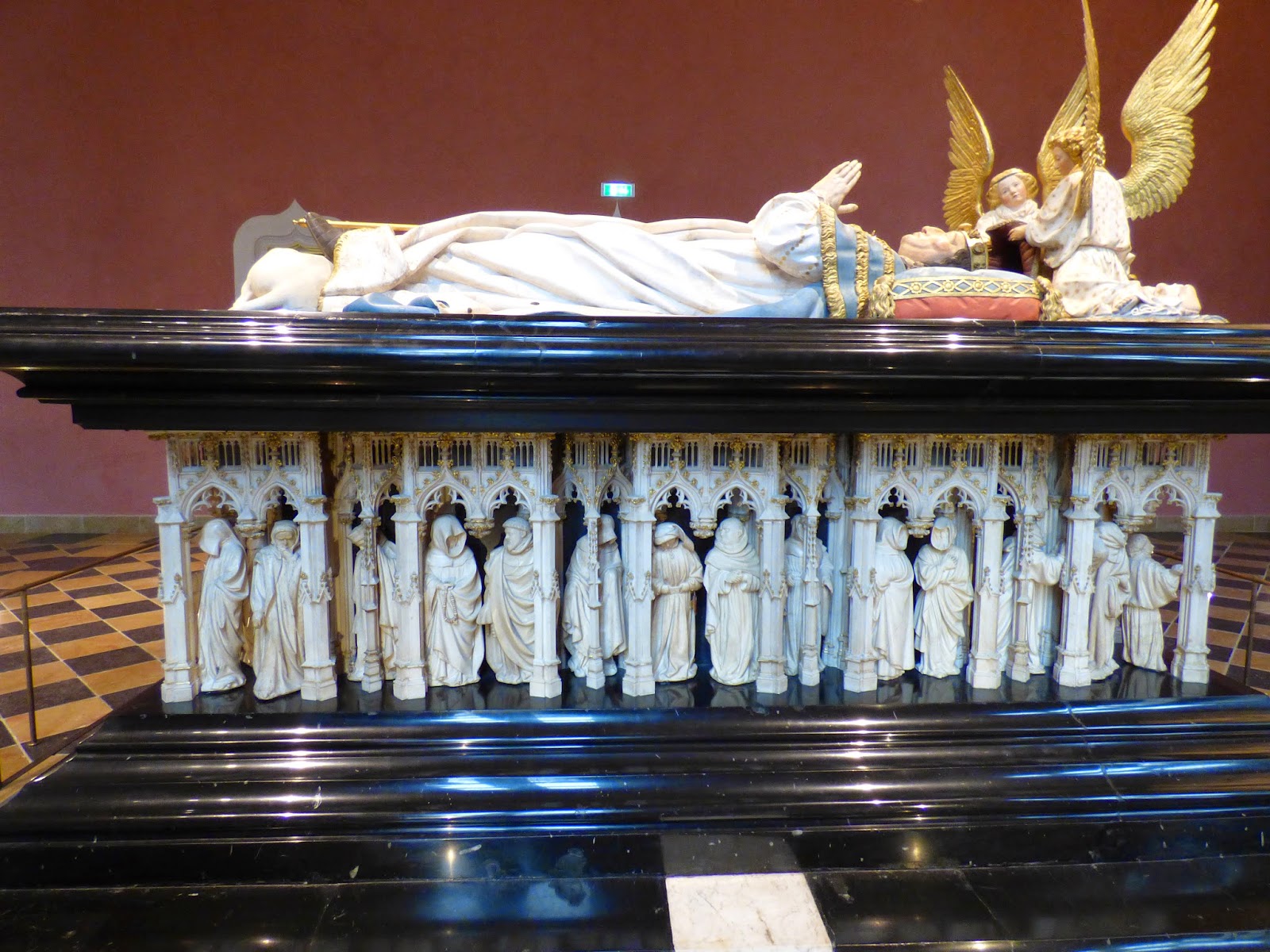Our Back Roads Journey through France.
When we started planning our driving holiday through France,
we decided that even though there were some tourist attractions in the larger
cities that we just had to see, it was also important for us to get a true
taste of France and to see the countryside and the smaller villages. We
therefore decided to keep off the main freeways as much as possible and even
though it would take a lot longer to get from A to B that we would travel the
Back Roads of France.
When we were in Normandy as well as seeing the D-day Beaches
and some of the small villages that were heavily involved in the liberation of
France during the 2nd WW, we also travelled the back roads - along the magnificent Cote d’Albatre
(Alabaster Coast) so named because of its chalky cliffs and milky waters. This
coast line extends from La Havre to Le Treport but we spent our time exploring
the villages of Etretat and Fecamp and the coast line and small farming
villages between these two places. We had beautiful sunny weather and the sea
was just a perfect azure blue that really stood out against the high white
cliffs. The beaches were made up of only very large well rounded stones and
extremely hard to walk along. It was fascinating to watch the school children
on their excursion to the beach making stone castles instead of sand castles.
The Beach at Fecamp showing the steep chalk cliffs and the rocky beaches.
The view from the cliffs looking back towards the Town of Decamp.
One of the other small villages along the Alabaster Coast.
The major attraction in this area is the Falaise d’Aval at
Etretat. This is where the cliff has been eroded into an arch which looks like
an elephant dipping its trunk into the sea. As well as walking along the
beaches we also went high up on the cliffs at Fecamp and looked back at the
main town beach and the magnificent white cliffs for as far as the eye could
see.
The Falaise d'Aval at Etretat on a very calm day.
Looking the other way up the beach at Etretat.
Note the painters on the beach painting the Elephant Cliff.
After leaving Fecamp we headed south east again keeping to
the back roads and avoiding the big cities where possible. The next area we
stopped in for a few days was the Burgundy area where the French make their
fabulous red wines. We spent one night in a little hotel in the small village
of St-Seine-l’Abbaye. It was just such a pretty village – most of the old timber
houses even though they are right on the road way, had lovely gardens around
their front doors, the local church was just full of history and interesting
things and the place we stayed was “Very French” and quaint.
We enjoyed a day exploring the streets of medieval Dijon and
in particular its wonderful Musee des Beaux Arts and its wonderful art works
and 3 of the most magnificent heavily sculptured Tombs that I have ever seen.
The Tomb of Philip the Bold by Claus Slater at the Muses des Beaux Arts. There were three very similar tombs in this mausoleum. They were very decorative and grand and their colours were magnificent.All the exhibits that we saw in this tiny Museum were just beautiful. They were mainly 14th and 15th century and the colours were so strong and perfect.
We also spent a day weaving our way through the grape vines
and the small villages, looking at old chateauxs, farm houses and churches and
just absorbing the atmosphere of this truly beautiful area.
One of the many chateaux that dot the hilltop villages in the Burgundy region.
Some of the vast expanse of grape fields. The variety grown is not very high compared to the ones I have seen in Australia.
An old cemetery in one of the small villages we visited.
A very grand Chateaux that is now used for wine tasting.
The Old Centre of Beaune has an interesting old area which
was a delight to explore on foot. Its main treasure is the Hotel-Dieu (Hospice
de Beaune) and it is a Medieval Jewel. Founded in 1443 this is the first
hospital built for the poor. It is a magnificent building with its superb
geometric multi-coloured Burgundian glazed roof tiles and a splendid central
courtyard. The history of this building and the story about its founders are
told by a very interesting self-guided audio tour and each room has wonderful
displays depicting how the patients were looked after during the centuries that
this building has been an operating hospital. It was excellent.
The Beautiful Enclosed Courtyard at the Hospice de Because.
The beds where the patients used to be put. Very clean and orderly but they would have to put two to a bed.
Burgundy is renowned for its brightly coloured and patterned roof tiles. This shows a section of the roof of the Hospice.
This is the very beautiful alter painting from the Hospice Chapel. It used to be folded in at the sides and only open up on Sundays and Holy Days. It is now fully restored and kept in a darken room. It is just magnificent.
A close up of one section of the Alter Painting.
Our time in the Burgundy area was made even more enjoyable because
we stayed in small secluded camping ground that overlooked the small village of
Chambeouf. Our accommodation was a little pine timber cottage and it was
situated at the edge of a forest. It was very peaceful and quiet and the family
who run the camping area were great. We had a great night with them - They made
pizza in a wood fired oven and with some of the locals, as well as other
campers we enjoyed a few bottles of local wine and watched the Soccer. I really
enjoyed trying to communicate with the local French children from the village.
They had lots of questions and with the children studying English at school I
tried to give them some answers.
Our cute little pine cabin at Chambeouf.
Our journey through the Back Roads of France will continue
with our adventures through the French Alps.


























No comments:
Post a Comment